Left Handed Guitars
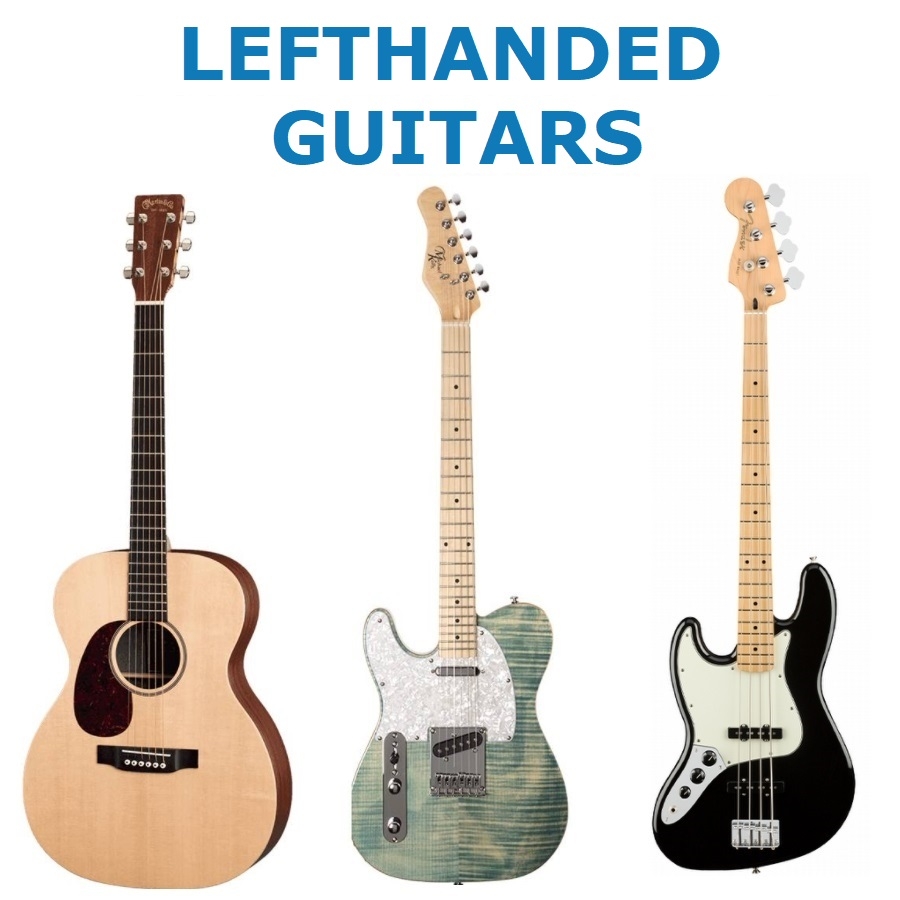
Playing guitar requires multitasking. When one is playing guitar, both hands will be used. If we’ll use both hands anyway, then why are there specific right- and lefthanded guitars? This is because both hands are used differently. They are both performing different tasks, and it’s important to divide these tasks efficiently. For a righthanded person, their right hand is dominant, while for a lefthanded person, their left hand is dominant. This means you are most skilled with your dominant hand, thus more skilled work needs to be done with your dominant hand. So what are the different tasks when playing guitar? One hand will work the fretboard, shortening the strings hence making different notes and chords, while the other strums the strings. Most people thing that the latter is easier because the hand only needs to hit the strings, whereas the first needs to be able to make complicated patterns and chords. However, this is not actually the case. Your strumming hand has harder and more intensive tasks to complete than your chord hand. This hand particularly needs to perform tasks such as deciding and keeping up with the rhythm, making consistent and proper strum patterns, remembering where the different strings are located, and being able to do this blindly, because most guitarists look at their fretboard while playing. It might not seem harder because you are likely strumming with your dominant hand, taking most of the pressure away. But consider this; a mistake made with your strumming hand will be a lot more noticeable than a mistake with your chord hand. These reasons are why guitars are made with the strumming hand as the dominant hand in mind. A lefthanded guitar will actually point right, whereas a righthanded guitar will point left.
What guitar is best suited for you?
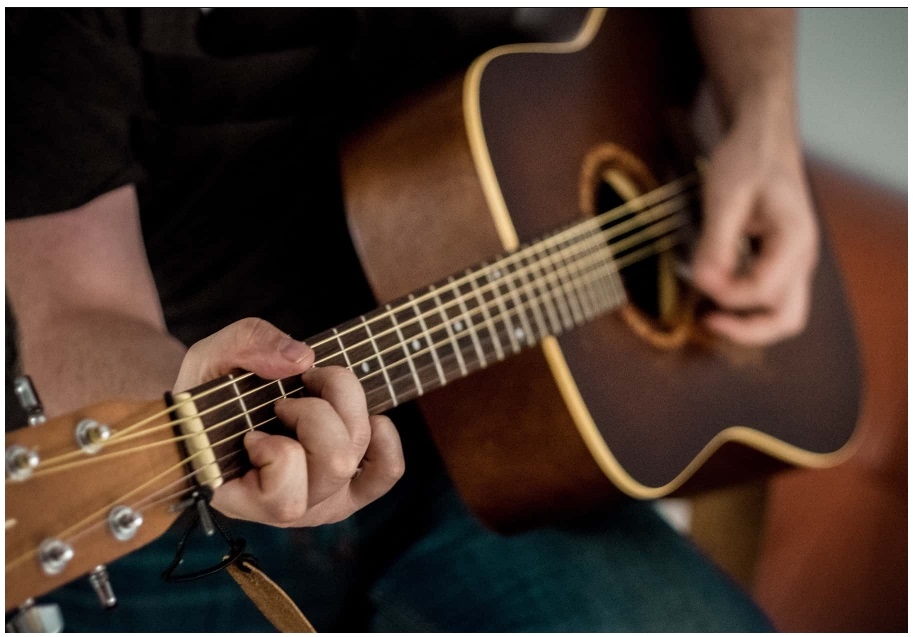
As established, guitars are developed to make it as comfortable and efficient as possible by using the dominant hand for the hardest part. Consequently, it is advisable to use a righthanded guitar if you’re righthanded and a lefthanded guitar if you’re lefthanded. However, it might not be this straightforward. This is because there are pros and cons to playing lefthanded, but also because some people are ambidextrous. If this is the case, the decision is up to the individual. However, even if there is a little preference between your hands, it is advisable to go with that hand. Additionally, a righthanded guitar might be advisable, as well. Most guitars, teaching methods, and music notation is made for righthanded guitars. For lefthanded people, it is also possible to play righthanded. This used to be the norm. In the past, beginning guitarists often didn’t know that there was a lefthanded option. Teachers would often also not pay attention to this. This has resulted in many lefthanded guitarists playing righthanded. This doesn’t mean that these guitarists are by any means ‘worse’ at playing guitar because they use their non-dominant hand for the hardest task, it simply mean that the basics were slightly harder for them to learn because it likely did not feel natural. When a guitarists has then learned the basics, they will not be at a disadvantage anymore. It is thus possible to play righthanded if you’re lefthanded, especially if you want to experience the advantages of playing righthanded. There are also two unique other options, but these are less advisable. The first option is playing like Jimi Hendrix, who played a righthanded guitar upside down. He did not change the strings or anything, he simply learned the chords and the strums upside down, as well. This is really not advisable. There aren’t really any teachers or methods that are able to teach you this upside-down method and you’ll still experience the inconveniences of an upside down guitar, like the curves and the strapholders. The other option is to buy a righthanded guitar and putting the strings on upside down and flip it. This is basically the same as Jimi Hendrix, but with the strings changed. This is also not advisable. There are multiple reasons as to why certain strings go where on a guitar, which means the guitar likely won’t sound good if you flip the strings. Additionally, you’ll also experience the other downsides of upside-down playing. Thus, it is best to either stick to a lefthanded or righthanded guitar. The differences, advantages, and disadvantages are explained further in the article to hopefully make your decision easier.
What makes a lefthanded guitar different from a righthanded guitar?
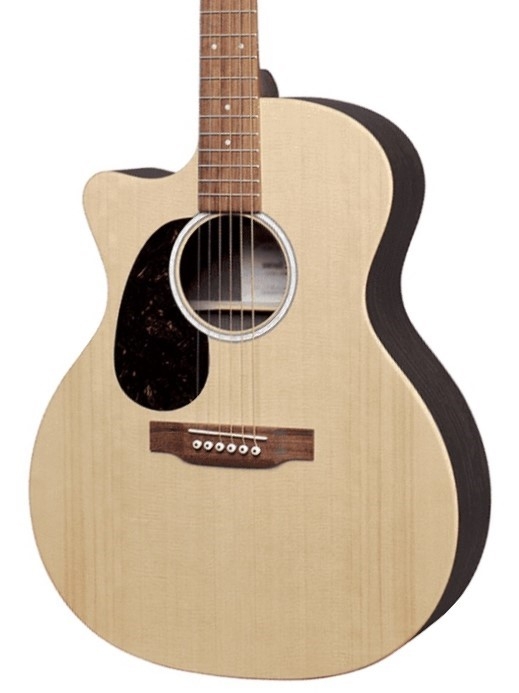
Like already has been stated above, a lefthanded guitar points in the opposite direction as a righthanded guitar to benefit the strumming hand. If it’s just the opposite, why can’t a righthanded guitar just be turned around and used as a lefthanded guitar? This is because a guitar has many components that make it work like it’s supposed to. Consequently, there are a lot of aspects that have to be taken in account, which makes it relatively necessary to make a specific lefthanded guitar. First off, a guitar is specifically designed to make sure every string is in the right place. If you look at a guitar, you’ll see that the strings lean on the bridge saddles and the nut. The nut is at the top of the neck and has little notches for the strings to sit in. The notches get smaller as the strings get thinner. If you would turn the strings around, you’ll find that the thicker strings won’t fit in the notches and the thinner strings will sink too far in the wider notches. A lefthanded guitar thus needs a lefthanded nut. The bridge has a slightly different problem. The saddles on the bridge make sure the length of the string is right, because the length of the string determines the intonation of the string. The intonation determines the way the tuning of the string is properly divided over the fretboard. This differs per string, which is why every string has its own saddle. If you were to turn the strings around, the intonation would be off. With electric guitars this usually can be fixed, but with acoustic guitars, this is often not the case. This is why it’s advisable to use a specific lefthanded bridge. Moreover, the shape of the headstock is important too. If your headstock is symmetrical, this is not important. However, if your headstock has a 6-in-line configuration, it is probably wise to make sure this is lefthanded as well. This is because it’s easier to have the tuners at the top of the headstock instead of at the bottom. All this aside, the body is likely the most important reason. Most guitars are shaped slightly asymmetrical. This is because the curves at the bottom are supposed to match up with your leg, so that the guitar balances perfectly when you play while sitting down. The curves on the top are supposed to match up with your arm and your chest, to make playing more comfortable. When turning the guitar upside down, the curves will not line up with your body, which could be uncomfortable. The strapholders on de body might also cause problems. Most strapholders near the neck are located on the top of the body, not in the middle. If you were to turn your guitar upside down, your strap will be in the way of the neck. The tremolo-arm has a similar problem. The arm is underneath the bridge, but if turned upside down, the arm will fall over the strings. Lastly, the pickguard will also be upside down. The pickguard will prevent the guitarist hitting the beautiful lacquer of the guitar. If the pickguard is located.jpg) north of the strings, it will be quite useless. All this being said, it is still possible to make a righthanded guitar lefthanded. Some acoustic guitars are symmetrical already and certain components of the guitar can be replaced. However, this might not be very cost-effective because you’ll likely need the help of a luthier. On the picture on the side you’ll see all the components that might need to be replaced if this is what you want to do. We have illustrated this with the Aria Pro II 714-MK2. The red circles show what aspects of the guitar might be in the way when it is flipped. Thus, it is likely the best and most affordable option to simply buy a lefthanded guitar.
north of the strings, it will be quite useless. All this being said, it is still possible to make a righthanded guitar lefthanded. Some acoustic guitars are symmetrical already and certain components of the guitar can be replaced. However, this might not be very cost-effective because you’ll likely need the help of a luthier. On the picture on the side you’ll see all the components that might need to be replaced if this is what you want to do. We have illustrated this with the Aria Pro II 714-MK2. The red circles show what aspects of the guitar might be in the way when it is flipped. Thus, it is likely the best and most affordable option to simply buy a lefthanded guitar.
Pros and Cons
Besides what might be easiest for you to learn, there are also other pros and cons of lefthanded playing. These are generally less important factors than the comfort and tuning stability arguments that were earlier mentioned, but might influence your decision. These pros and cons are mostly about playing methods, aesthetic reasons, and the selection of available lefthanded guitars. It is important to be aware of these factors before you start learning how to play the guitar.
Advantages of playing lefthanded

The most important advantage is of course the comfort of playing lefthanded. Your dominant hand will be used for the strumming, which will instantly feel more natural. There are nevertheless also other advantages of playing lefthanded. Another advantages is that there are few differences between playing left- or righthanded. Chords, tunings, scales, solos, etc. are all still played in the exact same manner as a righthanded guitarist will. The only difference is that you’ll have to do it mirrored. This might actually be an advantage, as well. Your guitar teacher will likely be righthanded, which means you can sit opposite of them and simply directly copy them, whereas a righthanded student will then visually have to mirror it themselves. You’ll, instead, be the mirror of your teacher. Playing lefthanded will thus in itself not disadvantage you. Additionally, other aspects of playing will be the same, as well. You are able to use the exact same accessories as any guitarist. There are no specific lefthanded capos, amps, pedals, etc. The only accessory you might have to pay extra attention to, is a case. Most cases are pre-formed, meaning a lefthanded guitar needs a lefthanded case. With the exception of certain symmetrical models. Guitar bags usually do not have this problem. The fact that all accessories are universal, means you only have to pay specific attention to the guitar itself, not to other aspects. The other advantages can be linked back to the fact that most people are righthanded. First off, when you are on stage with other guitarists and bassists, you’ll find that you will stand out with your lefthanded guitar in between righthanded musicians. This means you’ll simply be more noticeable and memorable simply by the way your guitar looks. Additionally, people won’t be very likely to want to borrow your guitar. This might be an advantage if you are very careful with your guitar. We have all been asked by non-guitarists if they can use your guitar, or by other guitarists if they can borrow your guitar. If you play lefthanded, not many people will be able to borrow your guitar, because they are righthanded. To reiterate: playing lefthanded is not inherently different to playing righthanded, other aspects of playing do not rely on it either, and you’ll simply be more unique.
Disadvantages of playing lefthanded
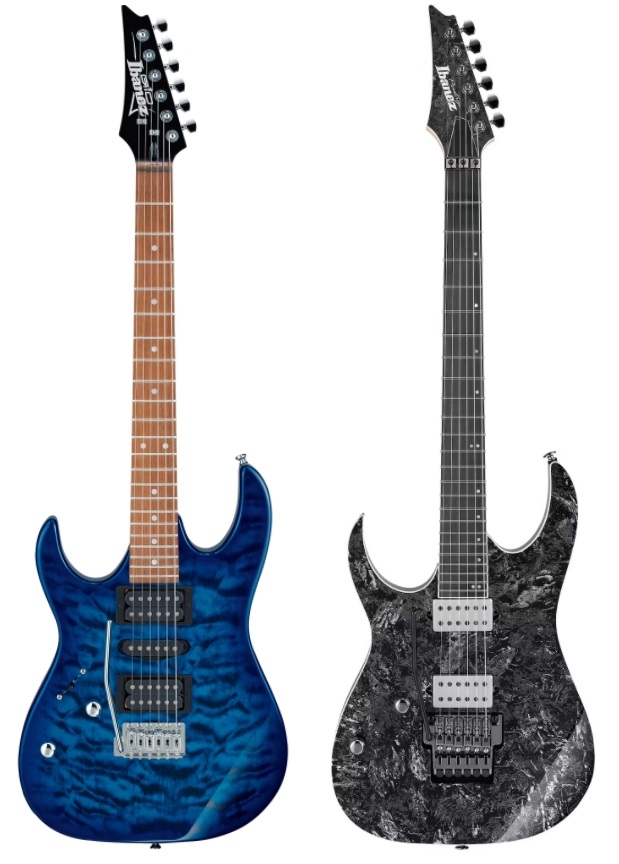
Unfortunately, there are also downsides to playing lefthanded. The most common and annoying disadvantage is also linked back to the fact that most people are righthanded. This means that most guitars are for righthanded people, and the selection of lefthanded guitars is thus much smaller. This has even become a controversy, lefthanded guitarists nowadays call out large guitar producers on their ridiculously small assortment of lefthanded guitars. This has actually resulted in an increase of lefthanded models, but there is still inequality with righthanded guitars. This is the case with nearly all brands, including more affordable brands like Stagg, but also more ‘professional’ brands like Fender and Michael Kelly only produce standard models as lefthanded models. This means that most brands only offer guitars with basic colours. This is unfortunate, because with righthanded models, more and more unique colours and patterns are used, but they are still quite rare for lefthanded guitars. If you chose to play lefthanded, you’ll likely have to accept that you’ll have less options. This is unfortunate for aesthetic reasons, but more important is that you’ll also have few pickup options. Standard models usually have standard pickups. If this is what you want, this is of course not an issue, but if you are after more unique or even specific pickups, it can be a problem. Fortunately, changing pickups is rather easy. You can always purchase separate pickups and solder them into your guitar. The colour of the guitar will be a little harder to change. There is an increase of more unique lefthanded guitars, as well, like these two beautiful Ibanez guitars on the attached picture. The selection of lefthanded guitars is thus developing to be more diverse and unique. There is also a slightly different solution. Even though we didn’t advise it earlier, you can actually buy a righthanded guitar and modify it. You’ll have to make sure it plays comfortable, and then a luthier can modify it to make it a lefthanded guitar. The luthier will likely have to change the bridge, the nut and the strapholders. Keep in mind that with electric guitars the knobs, switches, and input will be on the wrong side, as well. Another disadvantage is when you are playing with many people in a small room, you are more likely to be in the way. Most guitarists will be able to line up, but a lefthanded guitar will point the other way, which can lead to entanglement of guitar necks. Lastly, you’ll probably have to expect jokes and comments on your guitar. You’ll probably have to get used to ‘you’re holding your guitar wrong!’ and ‘haha your guitar is mirrored’. When someone comments this for the umpteenth time, you can just tell yourself that you’re more unique, both when it comes to guitar playing and when it comes to humour.
The selection of lefthanded guitars
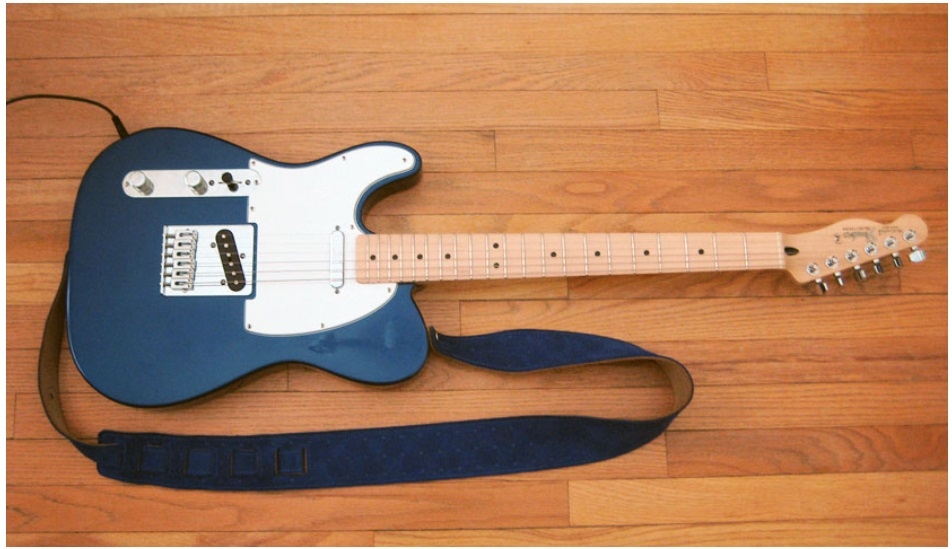
Like we have explained earlier, the selection of lefthanded guitars is significantly smaller than the selection of righthanded guitars. Consequently, music stores don’t tend to have an extensive assortment of lefthanded guitars. Nevertheless, stores collect lefthanded guitars from many different brands, which is why the best guitar for you will most likely be found in a store. Most lefthanded guitars are western guitars. This means you’ll likely be able to choose between different models and tonewoods. With electric and bass guitars you’ll have more choice between colours, but less choice between models. At Joh.deHeer we offer lefthanded guitars at different price points, which means there is a perfect guitar for everyone. This includes the budget friendly James Neligan ASY-D, but also the professional Martin D-10E. This is also the case with electric guitars. For a small price you can obtain the Stagg SES-30, but also the very popular Fender Player Stratocaster. Additionally, you’ll have to keep your other goals in mind. Make sure the guitar fits your playing style, genre, is made of your favourite materials, has your favourite tone, and most of all, it feels comfortable while playing. It’s also good to know what you prefer in guitars. Maybe your have a preference for a certain length of neck, or a characteristic of a certain tonewood. Thus, the small selection of lefthanded guitars will not prevent you from finding your ideal guitar!
Here you can find our assortment of guitars!
assortment
Martin D-10E-LH - Left-Handed
Martin developed the Road Series to bring the ultimate stage and studio guitars to the market. They mainly looked at professional guitarists, and what they find important on stage and in the studio. They have combined these points to produce the perfect stage and studio guitars, so that as a professional guitarist you only need to purchase one good guitar. For this, one of the most important points was the built-in electronics. A western guitar that sounds good acoustically does not mean that the guitar sounds good amplified. Martin used the Martin E1 for this. This is high-quality technology that translates the sound of the guitar to the amplifier as authentically as possible. In addition, this electronics has a tuner that turns off the output when switched on. Consequently, you can tune your guitar without the sound being amplified. In addition, Martin has ensured that the electronics are hidden in the guitar, so that the guitar still looks beautiful. Another important point is that the prices of the guitars do not reflect the quality. Such high-quality guitars usually come with a price tag that is double the price Martin gave them. This makes these guitars not only the ultimate for professional guitarists, but also very suitable for up-and-coming guitarists. The guitars come in all shapes, types, colors and materials and are supplied with a cover.

.jpg)
